In the beginning an Audiology practice is usually a simple situation. The audiologist is the primary clinician that sees patients and provides high quality diagnostic and rehabilitative services. As the practice grows to involve employees, tax complications, and other business issues, it may be beneficial to modify the structure of the business to shelter the owner from liability, save money on taxes, or provide other benefits. Although various business legal structures are known to Audiology practice managers the differences among them are not obvious. General types of business legal structures that can be used are sole proprietorships and corporations. While sole proprietorships are simple, corporations can be quite complex as to the type and rational for them. Some of the corporations are only for professionals; others are more suited for retail, while others can same taxes making some structures better than others. Audiology practice managers should know which is the most appropriate for their situation.
Sole Proprietorship
Johnson (2000) describes a sole proprietorship as simply a business that is owned by one person. This can include a person who repairs cars in his garage at home, a doctor or lawyer with their own office, the owner of a retail store, or the owner of an international manufacturing company. It makes no difference how big or small, or if it is full time or part time, or the number of employees all that matters in a sole proprietorship is that one person owns 100% of the business. Corley et al. (2002) cite the classic example of Charles Walgreen who, in 1901, bought the drugstore in which he worked on the south side of Chicago. Today, Walgreen's is the largest drugstore chain in the United States. If, like Charles Walgreen, a person starts their own audiology practice, with no partners or stockholders (including spouses), they are said to be a sole proprietor. 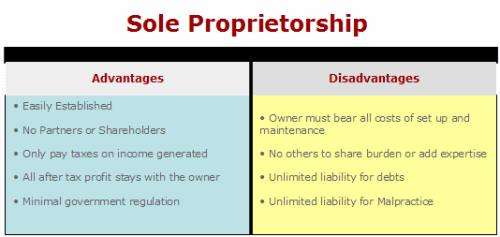
Figure 1. Sole Proprietorship. Note. Adapted from Traynor (2005).
In a sole proprietorship there are no other owners, no stockholders, no board of directors, no committees; no one must be listened to or consulted when making business decisions. It is the business owner (the proprietor) that bears all of the expense of equipment, office supplies, employees, marketing, billing, collections and other costs; but the sole proprietor is entitled to all of the after-tax profits as income. Since the business is owned by one person, swift decisions can be made to accommodate to market changes and cash flow situations.
Of all the business legal structures, a sole proprietorship is the easiest to start as there are no forms to fill out or legal formalities to endure other than licenses and tax forms. Beginning a sole proprietorship practice is simply "hanging out a shingle" and seeing patients. Johnson (2000) feels that the major advantage of a sole proprietorship structure is the ease with which it can be established, the lack of regulations governing this type of practice, and that the revenue generated is only taxed one time as personal income. This simplicity makes this business format ideally suited for informal small businesses, and, as such, forms the business structure of most audiology practices.
The serious downside of the sole proprietorship is that the owner is personally responsible for all of the business's debts, tax liabilities, malpractice, and other liabilities of the practice. If the practice owes the bank money to cover financial advances and it does not pay, the owner of the practice is personally liable for the total amount of the loan. If the debts are sufficiently large, the bank can force the owner into a personal bankruptcy since sole proprietors are the responsible party for all debts and liabilities of the business. Additionally, if the practice is sued for some reason the owner is also sued since they are responsible for liabilities as well as the profits of the business. Thus, as a sole proprietor, the owner has unlimited liability for not only their own actions, but the also the actions of the employees.
Partnership
If the practice has others involved in the business structure, sharing in its profit and losses, the sole proprietorship is inappropriate and a partnership should be formed. Partnerships, according to Corley et al. (2002) are established when two or more people wish to own a business together. They enter an agreement to share a common interest in a commercial endeavor and to share in its profit and losses. Often money and expertise are pooled to facilitate a business or practice with a colleague, friend, or relative.
Partnerships should never rely on implied agreements; there should be a formal agreement with explicit statements between the parties drafted into a formal legal document called the articles of partnership. Typically, an attorney draws the articles of partnership agreement that sets out how the management decisions are to be made and the portion of profits to which each partner is entitled. These agreements also describe the return of capital to the partners if the partnership is dissolved, what types of advances or loans can be drawn by the partners as well outlining the indemnification (protection) rights each partner owes the others in the partnership. The articles of partnership even outlines how a new partner can join the group, usually specifying that new partners must have the unanimous consent of all existing partners. Unlike the sole proprietorship, partnerships have strict laws that outline their establishment that can vary somewhat from state to state.
Partnerships have some distinct advantages and limitations outlined in Figure 2. While partnerships are relatively easy to establish and offer the benefits of pooled expertise and resources as well as the sharing of the after tax profit; the major disadvantage of a partnership is unlimited liability exposure of the partners for debts and malpractice. The real difference from a sole proprietorship is that the liability is now spread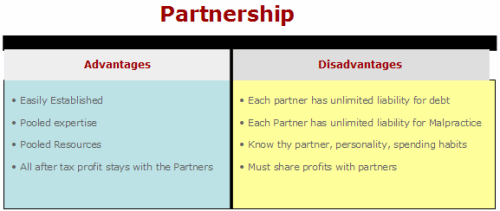
Figure 2. Partnership. Note. Adapted from Traynor (2005).
across the partners, rather than just on the shoulders of one person. Since you are totally associated with your partners for both debt and malpractice, it is imperative that the partners know each other very well. The best practical advice on partnerships is to "know thy partner" as this format has been likened a marriage in that it can be a very positive business relationships or a significant liability creating a difficult personal and business climate within the practice.
Corporations
As the practice grows and/or the personal liability exposure of the owner or partners increases, it may be necessary to incorporate. Corley et al. (2002) and Johnson (2000) describe a corporation as an artificial person or an intangible entity created by state law with a separate, legal existence from its owners. By definition, a corporation is a distinct legal entity and, unlike the sole proprietorship or the partnership, the corporation is an entity distinctly separated from its owners (now known as stockholders). Luben (2006) states that incorporating a business, isolates personal assets from those of the practice and shields your home, private bank accounts, cars, retirement savings, and other assets from the ongoing threat of business related lawsuits and other complications. He further indicates that incorporating adds substance to your practice by communicating stability, authority and professionalism, as well as a permanence that goes beyond any single person. By establishing a corporation the practice is not merely a one-person, "Mom & Pop" operation but evolves into an established entity.
At time of incorporation the owners (stockholders) incur numerous fees such as attorney fees, filing fees, purchase of minute books, corporate seals, etc. Although a corporation is more costly to form compared to sole proprietorships or partnerships, the benefits offered to the owners or partners of corporation may be well worth the expenses, paperwork, and professional legal assistance. Corporations are created by articles of incorporation, legal document drawn and filed by an attorney within the state that the corporation will reside (not necessarily the same state where the practice operates). These state determined articles of incorporation, among other things, set out the purpose of the business, how many shares of stock can be issued, the number of individuals to be appointed to the board of directors and other specifics about the new corporation. Since the corporation is a new entity and almost like creating a new person part of the formal process of creation is that it must have a unique and original name, not taken by another corporation. According to Brealey, Myers, and Marcus (2002), a corporation is considered a resident of its state so it can borrow or lend money, sue or be sued, and pays its own taxes.
Although large corporations have a boards responsible to a great number of stockholders, it is not uncommon for an incorporated audiology practice to be wholly owned by one person and a Board of Directors, who, in fact, might be the owner and his relatives who compose the stockholders. In these "closely-held corporations," the owner controls all of the stock and therefore makes all of the management decisions. Sometimes it is necessary to sell some stock to others to raise money to invest or continue the business operation. Depending upon how much stock is sold, it may be necessary for the Board of Directors to specify a controlling and a minority interests according to the percentage of stock owned.
The major benefit in establishing a regular corporation (C type), usually designated by "Inc." after its name, is the shelter from personal liability for the owner (stockholder). Generally, in corporations, the owner (stockholder) of the corporation is not liable personally if the company is sued, defaults on a loan, and does not pay their bills, unless the owner has guaranteed the corporation's debts personal assets. In the hearing industry, most product manufacturers require the owner (stockholder) to be personally liable for accounts and ask for a personal guarantee when accounts are opened for the "company." Additionally, law suits against the corporation are usually not a personal obligation unless the suit carries a personal suit as well. Without these personal guarantees, if the corporation goes bankrupt, the suit for the debt does not usually affect the owners (stockholders), except to the limit of the stock that they have purchased. 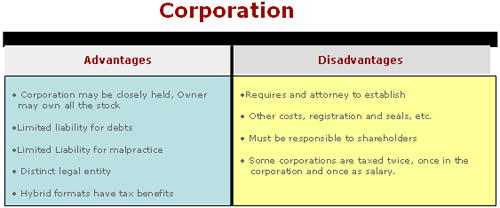
Figure 3. Corporation. Note. Adapted from Traynor (2005).
The major disadvantage of regular, type C Corporation is double taxation. Since the corporation is a tax entity, it is taxed at a corporate rate (about 35% of total revenue minus deductions). So, not only does the corporation pay taxes on its profit, but the employees (including the 100% stockholder/manager of the corporation) pay taxes on their income received from the corporation at their personal tax rate. Thus, as a sacrifice for the liability shelter of the corporation, the 100% shareholder/owner of the corporation will pay taxes on the income generated by the corporation and taxes again the same income obtained by the owner/shareholder as an employee manager. In contrast, the sole proprietorship or partnership is taxed only once on the income generated.
Creative or Hybrid Forms of Business Organization.
Traynor (2005) indicates that many businesses do not fall neatly into any of the three general business format categories and require legal structural modification to meet their needs. Type C Corporations are attractive for the liability shelter, but the double taxation should be avoided if at all possible. In an effort to keep the benefits of corporations without this double taxation, there have been some other types of corporations established to counteract this difficulty. Brealey et al, (2002) describe these corporate modifications as "hybrids" since formats are combinations of the sole proprietorship, the partnership, and a regular corporation.
The "S" Corporation
A special hybrid corporation that does not have double taxation is the "S corporation". Allowed since the late 1950s, the "sub S corp" has all of the financial, legal and malpractice sheltering characteristics of a regular C corporation; it is treated differently by the Internal Revenue Service (IRS) in that the corporate profits are not taxed. Johnson (2000) presents that an S corporation, itself, does not pay income tax but rather its owners (stockholders) distribute the income of the S corporation among themselves to the same proportions as their ownership interest in the corporation. Each 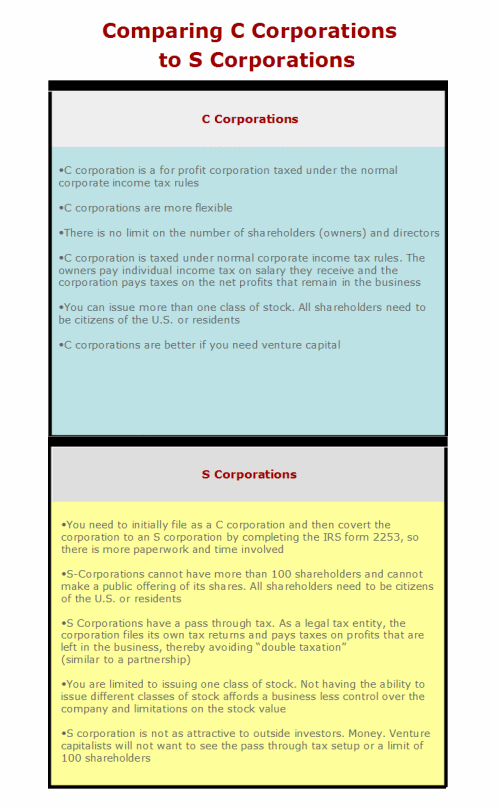
Figure 4. Comparing C Corporations to S Corporations. Note. Adapted from FilemyBiz.com (2006).
owner then includes their respective share of the S corporations income (or loss) when determining their own personal tax liability. Thus, income from the S corporation is treated like a partnership and each owner (stockholder) pays taxes on their share of the profits on their individual tax returns at their individual tax bracket. S corporations are quite popular in Audiology so that the limited liability remains, but the double taxation is not a problem.
In many states there are Professional Corporations (PC), a designation usually reserved for physicians, dentists, lawyers, accountants and other professionals. This PC designation is reserved for professionals as many states would like to separate professionals and their corporations from other types of corporations exposing them to more personal liability than those in other types of businesses. In a professional corporation, the business component has limited liability, but the professionals within the business can still be sued personally for malpractice, even if their malpractice occurs in their role as an employee of the corporation (Corley et al, 2002).
The Limited Liability Company (LLC)
Corley et al. (2002) indicates that the LLC began in Wyoming in the late 1970s and was approved by the IRS in 1988 to be treated as nontaxable entities, much link partnerships for federal income tax purposes. Since then there has been growing interest the limited liability company (LLC) for companies or the limited liability partnership (LLP) used by professionals. These LLC/LLP formats combine the tax advantages of a partnership and the limited liability advantage of a corporation. Luben (2006) offers that with a C corporation owners are taxed twice; first on the corporate profits and then on the personal income when the profits are distributed as dividends. The situation is somewhat better in an S corporation in that profit can flow through personal income, thereby subjecting it to single taxation, but the S corporation is quite restricted and offers less flexibility than the LLC. In the LLC the shelter from liability is the same as a corporation, but there is flexibility, and single taxation.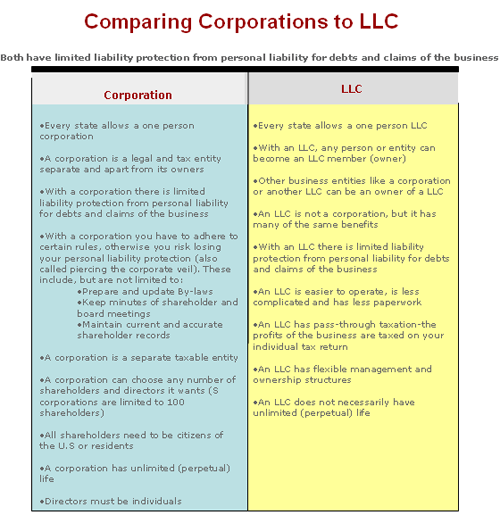
Figure 5. Comparing Corporations to LLC - Both have limited liability protection from personal liability for debts and claims of the business. Note. Adapted from FilemyBiz.com (2006).
The creation of a LLC/LLP is much like that of a corporation but the terminology is quite different. The document filed with the state is called articles of organization and the owners of the LLC are referred to as members not stockholders or partners. As in a partnership, members make contributions of capital to the LLC and have equal rights to share in the profit (or loss). Corley et al. (2002) indicate that managerial control of the LLC is vested in its members and a majority decides the direction of the LLC.
Ultimately, after going through the various types of entities described in this paper, the next logical question is, what type business organization should the professional use? Just as a patient might ask, "What is the best hearing aid for me?" the answer depends on the unique needs and circumstances of the situation. Since there are pros and cons to each of these legal business formats for new or existing audiology practices, it would be good advice to consult an attorney and a Certified Public Accountant (CPA) on how to organize your Audiology business. Much like a well fit hearing aid, the time and money spent up front, will be well worth the potential pitfalls avoided, and more than reimbursed by the benefit provided in the long run.
References
Brealey, R., Myers, S. & Marcus A. (2002). Fundamentals of Corporate Finance, Third Edition, New York: McGraw-Hill Publishers.
Corley, R., Reed, L., Shedd, P., & Morehead, J. (2002), The Legal & Regulatory Environment of Business, Eleventh Edition, New York: McGraw Hill Publishers.
File My Biz (2006). Comparison Charts. Filemybiz.com. Retrieved on April 16, 2006 from www.filemybiz.com/incorporate/sandc.php?osCsid=596b23d4c09ca29c7f7f475c4146ba43
Johnson, K. (2000). Business Owners Legal Guide. Fort Worth, Texas: Knowles Publishing Inc.
Luben, J. (2006). Why Incorporate? Inc. Plan (USA). Retrieved on April 15, 2006 from www.incplan.net/formation.html
Traynor, R. (2005). To Incorporate or Not to Incorporate. Audiology Today, 18 (1).
Advantages and Limitations of Various Business Legal Structures
May 1, 2006
Related Courses
1
https://www.audiologyonline.com/audiology-ceus/course/understanding-privilege-for-healthcare-professionals-36096
Understanding Privilege, for Healthcare Professionals
Systems of privilege have created a wide division of inequality. This course will help hearing care professionals identify their privilege and determine how to make a difference in their places of employment.
auditory, textual, visual
129
USD
Subscription
Unlimited COURSE Access for $129/year
OnlineOnly
AudiologyOnline
www.audiologyonline.com
Understanding Privilege, for Healthcare Professionals
Systems of privilege have created a wide division of inequality. This course will help hearing care professionals identify their privilege and determine how to make a difference in their places of employment.
36096
Online
PT60M
Understanding Privilege, for Healthcare Professionals
Presented by Esther Clervaud, EdS
Course: #36096Level: Intermediate1 Hour
AAA/0.1 Intermediate; ACAud inc HAASA/1.0; BAA/1.0; CAA/1.0; IACET/0.1; IHS/1.0; NZAS/1.0; SAC/1.0
Systems of privilege have created a wide division of inequality. This course will help hearing care professionals identify their privilege and determine how to make a difference in their places of employment.
2
https://www.audiologyonline.com/audiology-ceus/course/creating-leadership-in-audiology-through-37632
Creating Leadership in Audiology Through a Mentoring Circle
There are so many components to quality patient care that it is challenging to “master” them all. What if you could come together with other professionals who possess knowledge or experience that could help you or your practice? There are a number of veteran audiologists as well as rising professionals who have wisdom, qualifications, narratives, and unique journeys to share. The purpose of this talk is to rethink the traditional mentor/mentee vertical relationship and explore collaboration in the form of circle…where all professionals, regardless of age or experience, learn from each other.
auditory, textual, visual
129
USD
Subscription
Unlimited COURSE Access for $129/year
OnlineOnly
AudiologyOnline
www.audiologyonline.com
Creating Leadership in Audiology Through a Mentoring Circle
There are so many components to quality patient care that it is challenging to “master” them all. What if you could come together with other professionals who possess knowledge or experience that could help you or your practice? There are a number of veteran audiologists as well as rising professionals who have wisdom, qualifications, narratives, and unique journeys to share. The purpose of this talk is to rethink the traditional mentor/mentee vertical relationship and explore collaboration in the form of circle…where all professionals, regardless of age or experience, learn from each other.
37632
Online
PT60M
Creating Leadership in Audiology Through a Mentoring Circle
Presented by Natalie Phillips, AuD
Course: #37632Level: Introductory1 Hour
AAA/0.1 Introductory; ACAud inc HAASA/1.0; AHIP/1.0; ASHA/0.1 Introductory, Related; BAA/1.0; CAA/1.0; Calif. SLPAB/1.0; IACET/0.1; IHS/1.0; NZAS/1.0; SAC/1.0
There are so many components to quality patient care that it is challenging to “master” them all. What if you could come together with other professionals who possess knowledge or experience that could help you or your practice? There are a number of veteran audiologists as well as rising professionals who have wisdom, qualifications, narratives, and unique journeys to share. The purpose of this talk is to rethink the traditional mentor/mentee vertical relationship and explore collaboration in the form of circle…where all professionals, regardless of age or experience, learn from each other.
3
https://www.audiologyonline.com/audiology-ceus/course/core-topics-for-audiology-assistants-37123
Core Topics for Audiology Assistants
This course includes one hour of content on each of the following topics: 1) ethical concepts and decision-making; 2) universal safety precautions, including the Occupational Safety & Health Administration's (OSHA) bloodborne pathogens standard, and 3) patient confidentiality and the Health Insurance Portability & Accountability Act (HIPAA).
auditory, textual, visual
129
USD
Subscription
Unlimited COURSE Access for $129/year
OnlineOnly
AudiologyOnline
www.audiologyonline.com
Core Topics for Audiology Assistants
This course includes one hour of content on each of the following topics: 1) ethical concepts and decision-making; 2) universal safety precautions, including the Occupational Safety & Health Administration's (OSHA) bloodborne pathogens standard, and 3) patient confidentiality and the Health Insurance Portability & Accountability Act (HIPAA).
37123
Online
PT180M
Core Topics for Audiology Assistants
Presented by James W. Hall III, PhD, Kathleen Weissberg, OTD, OTR/L, Amit Gosalia, AuD
Course: #37123Level: Introductory3 Hours
AAA/0.3 Introductory; ACAud inc HAASA/3.0; AHIP/3.0; ASHA/0.3 Introductory, Related; BAA/3.0; CAA/3.0; Calif. SLPAB/3.0; IACET/0.3; IHS/3.0; Kansas, LTS-S0035/3.0; NZAS/3.0; SAC/3.0
This course includes one hour of content on each of the following topics: 1) ethical concepts and decision-making; 2) universal safety precautions, including the Occupational Safety & Health Administration's (OSHA) bloodborne pathogens standard, and 3) patient confidentiality and the Health Insurance Portability & Accountability Act (HIPAA).
4
https://www.audiologyonline.com/audiology-ceus/course/engaging-deaf-professionals-in-ehdi-37893
Engaging Deaf Professionals in the EHDI System
The course explores ways to draw on Deaf professionals' expertise in working with families of Deaf and hard of hearing infants and young children. A highlight of Deaf people's knowledge, experiences, expertise, and contributions in the EHDI (Early Hearing Detection and Intervention) System will be discussed.
auditory, textual, visual
129
USD
Subscription
Unlimited COURSE Access for $129/year
OnlineOnly
AudiologyOnline
www.audiologyonline.com
Engaging Deaf Professionals in the EHDI System
The course explores ways to draw on Deaf professionals' expertise in working with families of Deaf and hard of hearing infants and young children. A highlight of Deaf people's knowledge, experiences, expertise, and contributions in the EHDI (Early Hearing Detection and Intervention) System will be discussed.
37893
Online
PT60M
Engaging Deaf Professionals in the EHDI System
Presented by Sheri Farinha, MA, Julie Rems Smario, EdD
Course: #37893Level: Intermediate1 Hour
AAA/0.1 Intermediate; ACAud inc HAASA/1.0; AHIP/1.0; ASHA/0.1 Intermediate, Related; BAA/1.0; CAA/1.0; Calif. SLPAB/1.0; IACET/0.1; IHS/1.0; Kansas, LTS-S0035/1.0; NZAS/1.0; SAC/1.0
The course explores ways to draw on Deaf professionals' expertise in working with families of Deaf and hard of hearing infants and young children. A highlight of Deaf people's knowledge, experiences, expertise, and contributions in the EHDI (Early Hearing Detection and Intervention) System will be discussed.
5
https://www.audiologyonline.com/audiology-ceus/course/innovative-audiologic-care-delivery-38661
Innovative Audiologic Care Delivery
This four-course series highlights the next generation of audiology innovators and their pioneering approaches to meeting unmet audiologic needs in their communities and beyond. This peer-to-peer educational series highlights researchers, clinicians, and business owners and their pioneering ideas, care delivery models, and technologies which provide desperately needed niche services and audiologic care.
auditory, textual, visual
129
USD
Subscription
Unlimited COURSE Access for $129/year
OnlineOnly
AudiologyOnline
www.audiologyonline.com
Innovative Audiologic Care Delivery
This four-course series highlights the next generation of audiology innovators and their pioneering approaches to meeting unmet audiologic needs in their communities and beyond. This peer-to-peer educational series highlights researchers, clinicians, and business owners and their pioneering ideas, care delivery models, and technologies which provide desperately needed niche services and audiologic care.
38661
Online
PT240M
Innovative Audiologic Care Delivery
Presented by Rachel Magann Faivre, AuD, Lori Zitelli, AuD, Heather Malyuk, AuD, Ben Thompson, AuD
Course: #38661Level: Intermediate4 Hours
AAA/0.4 Intermediate; ACAud inc HAASA/4.0; AHIP/4.0; ASHA/0.4 Intermediate, Related; BAA/4.0; CAA/4.0; IACET/0.4; IHS/4.0; NZAS/3.0; SAC/4.0; Tier 1 (ABA Certificants)/0.4
This four-course series highlights the next generation of audiology innovators and their pioneering approaches to meeting unmet audiologic needs in their communities and beyond. This peer-to-peer educational series highlights researchers, clinicians, and business owners and their pioneering ideas, care delivery models, and technologies which provide desperately needed niche services and audiologic care.

